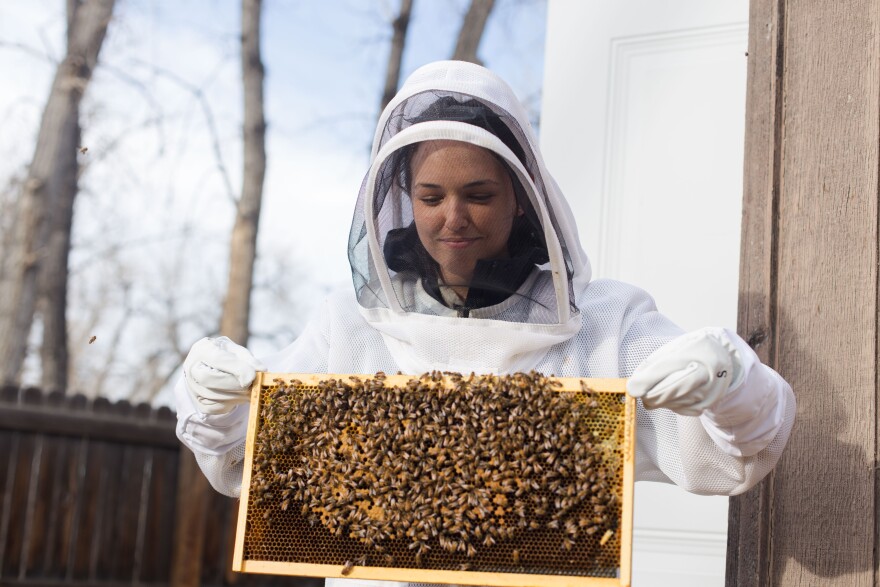Most people know and love bees for their honey. Turns out their swarm structure is pretty sweet too.
When bees gather in swarms, they aren’t just floating in the air.
“They're kind of holding hands and they cling on to each other,” said Orit Peleg, a researcher at the University of Colorado Boulder. “And then usually they're suspended from something. It could be a tree branch.”
Peleg is one of the authors of a published last month on how honeybees in swarms form a structure that holds all of them up.

“Bees can maybe communicate with bees that are close to them in the swarm, but they certainly cannot directly communicate with bees that are very far away from them, maybe at the other edge of the swarm,” she said. “What we are trying to understand is how do they coordinate, forming a structure that maintains mechanical stability, which usually demands the simultaneous coordination of everybody involved?”
To understand that, the researchers coaxed bees into swarms and used a small CT scanner to peek inside, resulting in 3D models that reveal swarms' internal structure.
“The overwhelming majority of bees are inside and we cannot see them just because of the opaqueness of bees,” Peleg said. “And they could play a potentially really important role for mechanical stability.”
They found that bees can distribute the load throughout the entire swarm instead of solely on the bees closest to the branch. They also found that the bees can easily regroup if a branch is shaken.
The researchers' goal is to someday apply their findings to building materials. Right now, most of our materials are static. Peleg believes bees’ structure and flexibility could be harnessed in materials to make them more resilient to environmental forces like earthquakes.
“They're adapting to the environment,” Peleg said. “They can respond to mechanical forces and also temperatures and things like these … This could be a really interesting way to upgrade the way we think about material design.”
Such insights, she added, could inspire designs for swarms of insect-sized robots. These tiny robots already exist and are programmed to communicate together to accomplish some goal. Applying bees' swarm intel could boost their utility.
“Maybe, at some point in the future, our buildings will be made of these active robotic materials,” Peleg said.
This story was produced by the Mountain West News Bureau, a collaboration between Wyoming Public Media, Nevada Public Radio, Boise State Public Radio in Idaho, KUNR in Nevada, the O'Connor Center for the Rocky Mountain West in Montana, ����vlog��ý in Colorado, KUNM in New Mexico, with support from affiliate stations across the region. Funding for the Mountain West News Bureau is provided in part by the .




